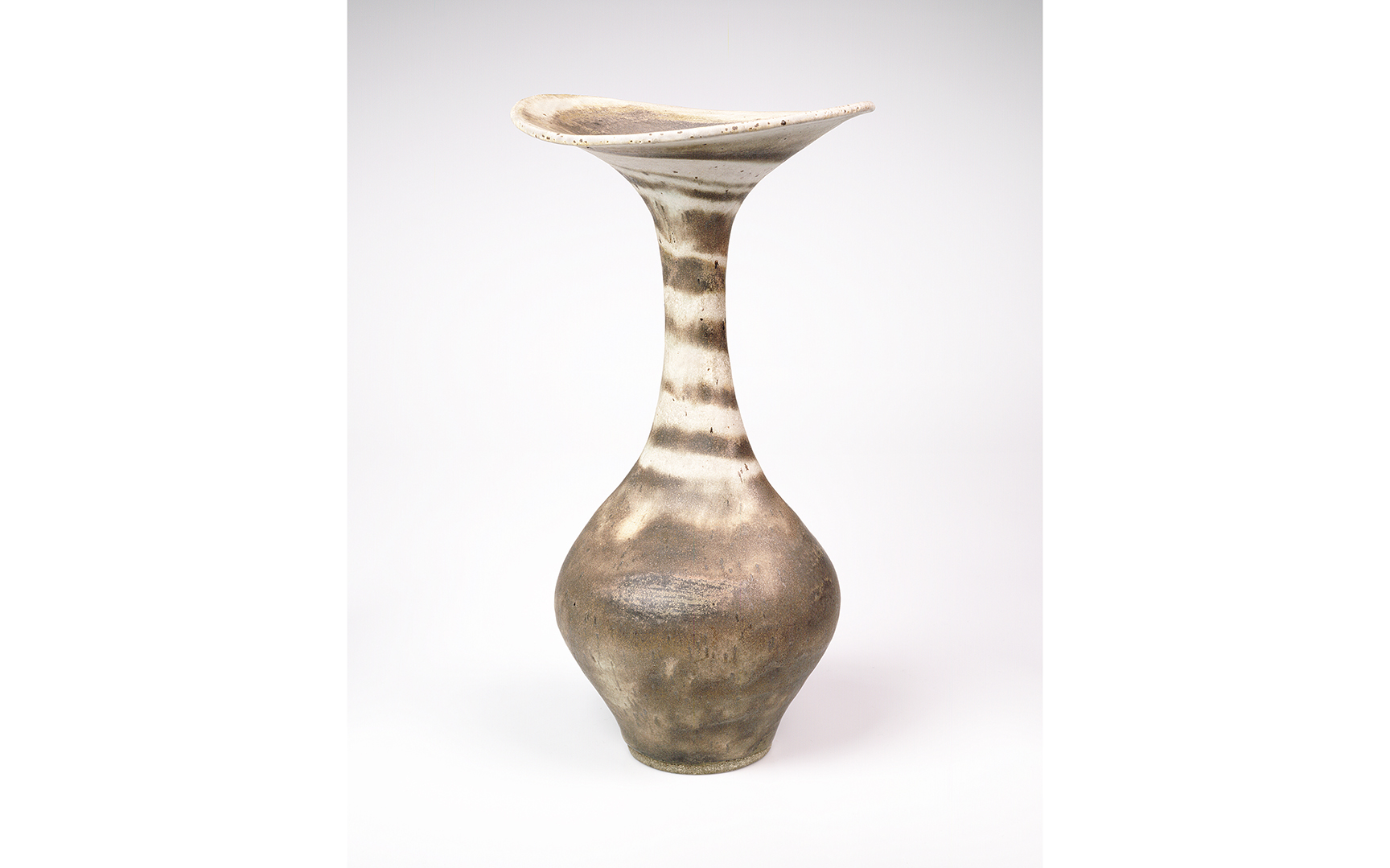
The Yale Center for British Art unveiled a new exhibit on British ceramics on Tuesday, entitled “‘Things of Beauty Growing’: British Studio Pottery.” The exhibit, a joint project with the Fitzwilliam Museum at the University of Cambridge, comes after 15 years of planning and is the first display the museum has done exclusively on pottery.
“It’s a really interesting moment in ceramics,” said Martina Droth, deputy director of research and curator of sculpture at the YCBA and one of the co-curators of the exhibition. “It’s much more becoming part of the world of art as a whole.”
“Things of Beauty Growing” features British studio pottery dating from the late 19th century to the present presented alongside historic works from China, Japan and Korea. The first major exhibition of British studio pottery in the United States, it follows the progression of the vessel form, beginning with the moon jar, one of the first Asian pieces of pottery brought back to Britain by Bernard Leach that inspired the beginning of British studio pottery. Leach, who has been called the father of British studio pottery, sought to combine the cultures of the East and the West in his creation of ceramics, and his book, “A Potter’s Book,” published in 1940, has never gone out of print. His work helped others who were disenchanted with the industrial production of ceramics begin to create meaningful objects, inspired by the East, marking the beginning of British studio pottery. The exhibit continues chronologically, moving from familiar forms of vases and bowls placed alongside much older East Asian versions to complex art pieces that are clearly no longer intended for use and yet still capture the essential essence of function that is present in the earlier works.
“The great move in the post-World War II era — in both the United States and Great Britain — has been to move from functional pottery to variations of pots which tell other kinds of stories,” said Philip Kalodner, a collector of British studio art. “It was an explosion of invention,” his wife Marge Brown added.
“Over time, and with artistic development, these things can transcend their function. They can have a dual status as a functional object and a beautiful work of art — to me, I think the show did a great job of embracing both of those,” said Jordan Schmolka ’20.
Although the showcase is entitled “British Studio Pottery,” it is not expressly British. In fact, upon entry to the museum, there is a display of large-scale red porcelain vases, each over 5 feet tall, part of Clare Twomey’s work “Made in China.” Throughout the museum, there are 80 of these vases, all produced in Jingdezhen, China, a centuries-old hub of ceramic production. Seventy-nine of the vessels are decorated with applied decals from the Chinese factory in which they were produced. However, one of them was hand-decorated, painted with 18-karat gold at Royal Crown Derby in Stoke-on-Trent in Staffordshire — a British center of ceramic production. This one object costs more than all the other vases put together.
In addition, in the exhibit itself, there are several examples of non-British artists integrated into the exhibit — from the early Asian pottery that inspired the first British studio artists to contemporary African and Asian potters. The exhibit ends with an installation called “Virtues of Unity” by Halima Cassell, in which she makes vessels from clay she collects throughout her travels, with the design inspired by the local pottery tradition. The goal of the incorporation of pieces from outside of Britain, Droth tells me, is to show that British studio pottery is not distinctly British, but a combination of many cultures.
“The whole show is about the global dimensions and the universality of ceramic production,” said Droth.
Schmolka, however, doesn’t think it was enough. “I loved the way Asian artifacts were included and placed alongside with British work, … but a lot of the text talked about the influence of African art or other geographic artistic traditions, and those weren’t represented in the objects. … They weren’t included to the same degree Chinese and Korean pottery was, for example, and I think that’s a shortcoming,” said Schmolka.
The exhibit presents an examination of not only the meticulously crafted vessels on display, but also the human desire to take the ordinary and make it extraordinary. Initially, I questioned the purpose of elaborating upon what was already perfect in its utilitarian sense, and making its use, well, useless. Walking through the exhibit, the pottery seemed to whisper an answer back to me: Why not?
Contact Jake Kalodner at jake.kalodner@yale.edu .







